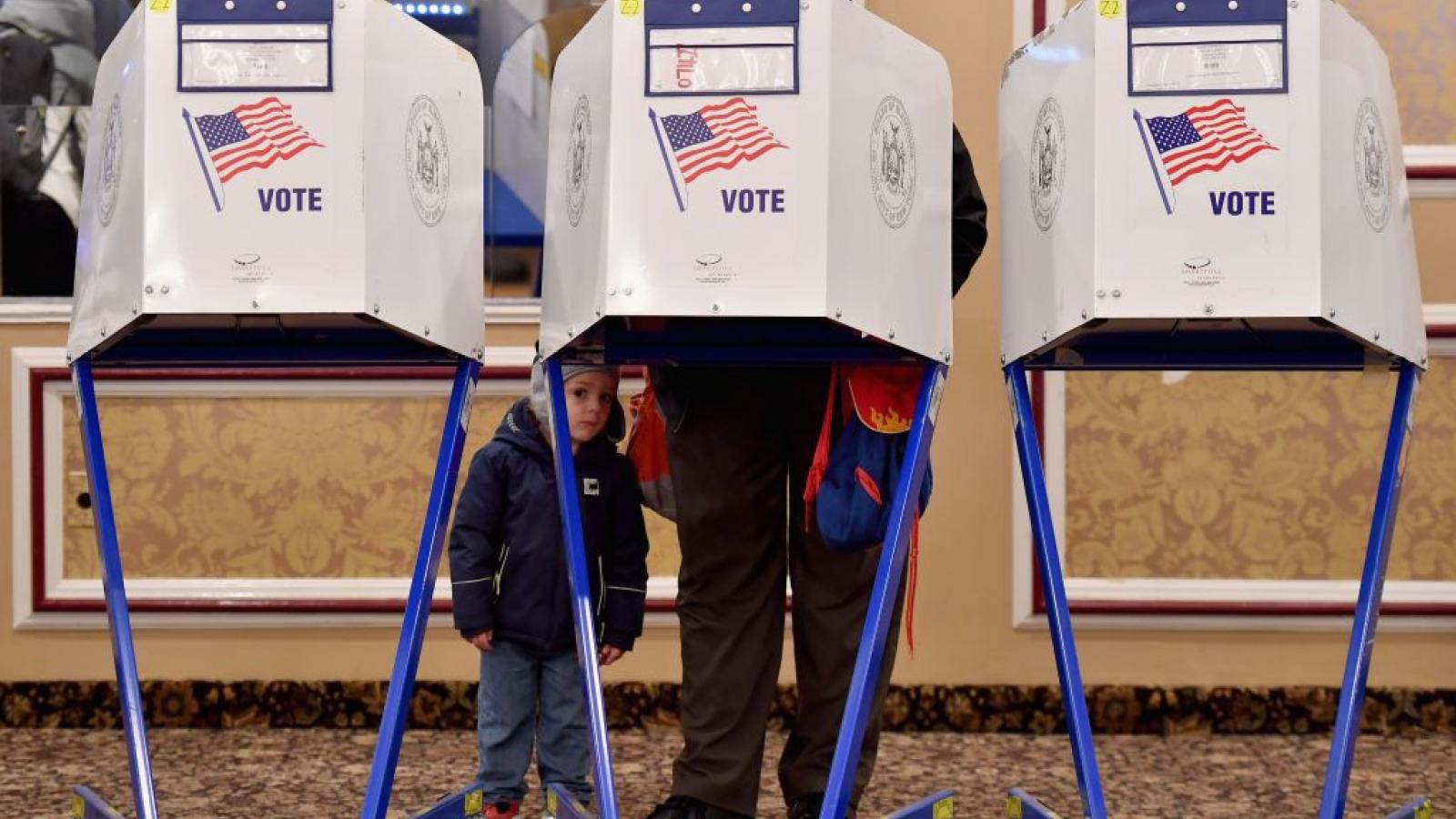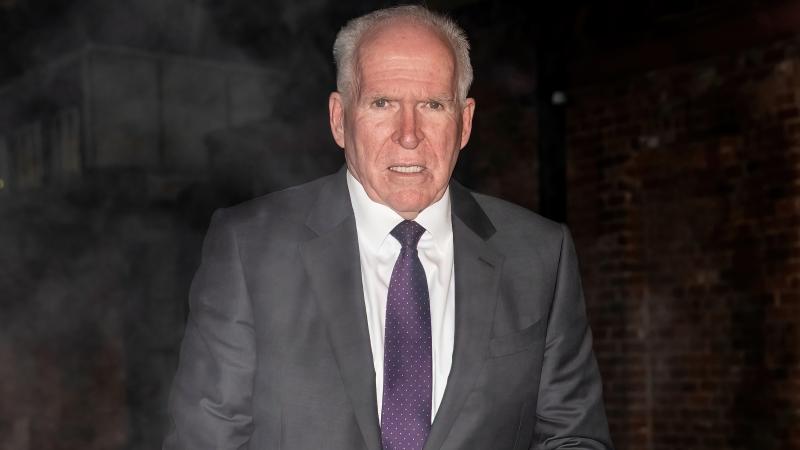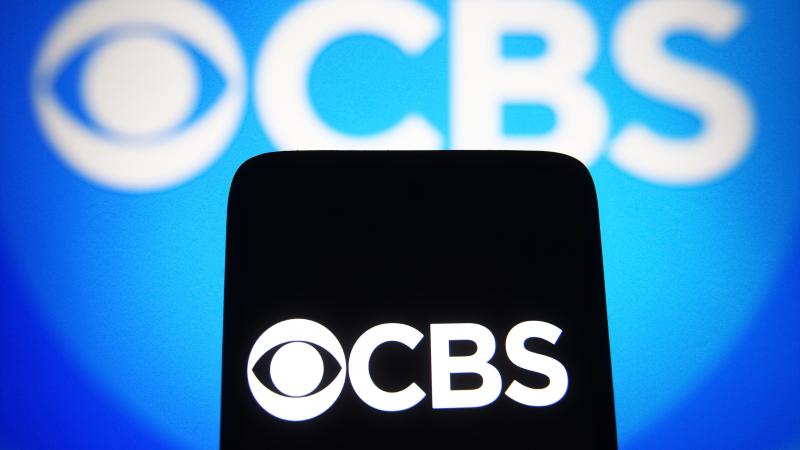The problems with polls

With 18 weeks left until Election Day, Americans remain critical of polling data and results.
Full Transcript:
Scott Rasmussen 0:08
Hey there, Scott Rasmussen here. Welcome to my podcast: Scott Rasmussen's Number of the Day. Hope you're having a great Tuesday morning and are preparing for a wonderful celebration of our nation's birthday this weekend. Now, as we head into the Fourth of July and really kind of get off into the summer season, this strange summer season that we're going to have amidst a pandemic. My latest polling numbers show that if the election were held today, Joe Biden will be elected president. Not really a surprise. Just about all the polls show that in my numbers, Biden leads Trump by eight points. And that's a big enough margin that again, if the election were held today, not only with Joe Biden be elected president, there's a decent chance the Democrats could regain control of the US Senate. And look, I know there's plenty of objections to all polls that are done and I'll come to that in a moment. But today's number of the day reminds us of a very important aspect of all polling data. It's the fact that polls can provide good data, but they have to be analyzed and interpreted in context and in the right time.
The number today, the Number the Day today is 18. There are 18 weeks to go until Election Day. 18 Tuesdays until the ballots are mailed in. That's a lifetime in politics, and especially in a volatile year like this. I mean, think of it, we're dealing with a pandemic and an economic crisis and civil rights tensions that weren't even on the radar screen a few months ago. At the beginning of the year, it looked like we'd be having a close election battle between President Trump and whoever the Democrats nominated. A couple of weeks ago, two or three weeks ago, looked like Joe Biden was opening up a huge double-digit lead. Now the numbers are still pretty good for Biden, but they've shifted. And one thing I know for sure, with 18 weeks to go, the only thing that would be wrong to assume is that the polling data today will predict what's going to happen in November. We can learn a lot from that data, but it doesn't predict the future. Now, the basic problem that we're running into, though, in this dialogue about what it might look like or how elections go, is that a lot of people simply reject the polling data. In today's world, that's especially prevalent among supporters of President Trump. Every time we put out a poll saying the president is losing, we hear the screams "fake news, fake news! Why are you guys trying to con us? Who's paying you? What's going on?"
Well, this all stems from a myth about the 2016 election. The myth is that in 2016, the polls got it wrong. In fact, as I'll discuss in the B-block, the polls were pretty good in 2016. It was the analysis of the polls that was horrible. And as we looked at 2020, there's reason to believe the polls will be good again, I just hope the analysis is a little better. I'll be talking about that, as I said, in the B-block explaining why the data was good, but the analysis was horrible. While you're waiting for that, I wanted to let you know that you can always go to my website ScottRasmussen.com and see the data that I talk about. You know, you can read about the methodology we used or when we conducted a survey, look at the cross tabs, other basic information, and I encourage you to do so. Also would encourage you to share this podcast with your friends and take a moment to subscribe to Scott Rasmussen's Number of the Day.
John Solomon 3:44
According to Home Title Lock, working from home is driving up the worst type of cybercrime: home title theft. Everyone is doing practically everything from home: working banking, video conferences, meal deliveries and shopping and cybercriminals are targeting your homes. Home Title Lock says, "these criminals want the money they can get by taking out loans against your home." The crime is home title theft, and the FBI is warning homeowners about it. Home Title Lock is how you can help protect your home from cyber thieves. Your home's legal title is online where they are able to find it and forge your signature, stating you sold your home to them. Then they can take out loans in your home and leave you in debt. Banks, insurance and basic identity theft services may not be enough to protect you. So, Home Title Lock puts a virtual barrier around your home's title. Protect your home now. Go to HomeTitleLock.com and register your address to see if you're already a victim. Use the code 'JustNews,' all one word, for 30 free days of protection to help you through the difficult time. That's code 'JustNews,' all one word, at HomeTitleLock.com. That's HomeTitleLock.com. Don't forget to use a special code: 'JustNews,' no spaces, today.
Scott Rasmussen 5:03
Welcome back to Scott Rasmussen's Number of the Day. I'm Scott and today's number is 18. There are 18 weeks to go until Election Day. And I'm using that number to highlight an important part of the political process as it relates to polling. Polls can be a valuable tool. But even the best poll, if it's misinterpreted, can look bad. You know, if you were to take my poll today that shows Joe Biden leading Donald Trump by eight and say that's what you expect in November, well, that's horrible analysis. If Joe Biden happens to win by eight points in November, it would be wrong to say my poll was perfect this far in advance at weeks ahead of time. If Donald Trump comes back and wins or if Joe Biden wins by 15 points, it'd be wrong to say that my poll was wrong. Why? Well, because the poll is a snapshot in time but there's a deeper concern here that goes into this gap but polling and the way people interpret polls.
There's a myth that in 2016 the polls were horrible, that nobody had any idea that Donald Trump could win. It's absolutely true. The media narrative was for a dominant Hillary Clinton victory. You know, someone wondered how many traditionally Republican states she could win. And look, I'll admit it myself, I was asked each week on Fox News to predict, to project, predict, to show a path to victory for Donald Trump. I didn't predict he would win. What I did do is say, 'Well, I can easily get him to 263 electoral votes, but he'll need to pull off an upset somewhere.' But, the fact is, the data never supported the narrative of an overwhelming likelihood of a Hillary Clinton victory. That was what the political world expected to see. That was what the media world expected to see. What did the data show? Well, the polling numbers show that going into election day, if you go to the Real Clear Politics average for election day, 2016, it shows that Hillary Clinton was projected to win the popular vote by three points, and she won by two. That's really good. Not only that, if you look at the last 12 polls that came out before the election, the last 12 national polls, 10 of them were right on the money within two points of the actual margin. There was one that was a little bit too optimistic for Hillary Clinton and one a little too optimistic for Donald Trump. Overall, that's a tremendous performance.
Now, a lot of people then say, "Whoa, well, who cares? National polls don't matter, the National Election doesn't matter. It's all about the Electoral College and the polls must have gotten that wrong." Well, actually, that's not true either. There were three states in the electoral college that shocked everybody: Pennsylvania, Michigan and Wisconsin. You know, a lot of reporters, you know, talked about them as being part of the big blue wall. These are states that will always go Democratic, they're part of the reason Hillary Clinton is guaranteed to win. But if you looked at the actual polling data, in Pennsylvania, the average of the polls showed that Hillary Clinton was leading by less than two points. And the very last poll in Pennsylvania showed Donald Trump winning the state. If you go to Michigan, see the same thing. The polling average there had Clinton up by about three points, again, within the margin of error, too close to call. And the last poll in Michigan showed Donald Trump winning. So, you had data there that said these races are close. But that's not what people expected to see. They assume that well, the polling average is three but really, Clinton is going to win by more than that. I actually sat in the green room in Fox News on Election Day 2016. And heard people talking, you know, the assumption was kind of, "Yeah, the poll says three points. It's going to be a little bigger than that." And there was one person in particular said, "No, they're just way off. It's going to be Clinton by nine. She might even hit double digits." That was projecting what people expected to see. And again, you know, no matter how you look at it, if you go back and look at the numbers, they were telling a different story.
On the Real Clear Politics site, you can go and look at their projections for 2016. On the morning of the election, they projected that only 203 electoral college votes were safe for Hillary Clinton. Only 164 were safe for Donald Trump. Now, Clinton was ahead, she was favored, but there were 171 electoral college votes in the toss-up category. The polling data gave an accurate picture of what was happening. And, you know, it led to kind of my assessment. Yes, it's very easy to see Donald Trump getting pretty close to winning. Getting close to the 270 mark. He can win the McCain-Romney states, he can add Florida and Ohio and Iowa and where do you go from there? Well, the answer turned out to be Michigan, Pennsylvania and Wisconsin. Wisconsin, by the way, was a polling miss. It was the only state that the pollsters really missed. And one of the reasons was there wasn't a lot of polling done in the state. And I guess that's one of the reasons Hillary Clinton never bothered to visit it. But as we looked at 2020, the lesson from all this is there's a difference between polls and the media narrative coming from the polls. Look at the data itself, look at it with a little bit of humility. If a poll shows a candidate winning by a single percentage point, don't say, "oh, they're projecting this candidate is going to win," say, "wow, that's really close to call." I'll be back with some closing thoughts on this and the way to do some polling analysis and one of the things that I'll be doing in the 2020 cycle right after this. In the meantime, take a moment to share this podcast with your friends and subscribe to Scott Rasmussen's Number of the Day.
John Solomon 11:01
All summer long I've been doing Zoom and FaceTime and Skype. Doing all these online meetings because we're all trapped at home, right? And sometimes what you see on that screen can make you scared when you look at yourself. Zoom meetings with coworkers and clients are great until you notice the bags under your eyes and the deep wrinkles. That's especially true as you get older like I am. Let me tell you, these cameras catch everything. If you want to solve that I've got the solution. It's called Plexaderm, clinically studied serum that visibly eliminates your wrinkles, your crow's feet, all the under-eye bags, and you can do it in the comfort of your home. No risky, expensive surgery. All these problems are gone in just minutes. Plexaderm is the solution for Zoom meeting eyes. I know, I tried it and I look like me, just 10 years younger. I'm blown away actually by the results. Plexaderm can give you the confidence you'll need to be great on Zoom meetings or FaceTiming with friends. They'll sure be surprised when they see you this summer. The best part is, Plexaderm goes on clear and lasts for hours, so nobody will know you're using it unless, of course, you tell them. Now, go to TryPlexaderm.com and use my code: 'voices,' V-O-I-C-E-S, for half off a full-size bottle of Plexaderm, plus an additional $10 off. That's a great bargain: half off and an extra $10 off. Or call 800-685-1292. That's 1-800-685-1292 and mention the code 'voices.' Plexaderm is backed by a 30-day money-back guarantee. So, visit TryPlexaderm.com and use the code 'voices.' V-O-I-C-E-S at TryPlexaderm.com. You're going to get a great deal and you're going to look better on your next zoom meeting. Trust me, I know.
Scott Rasmussen 12:43
Welcome back to the C-block of Scott Rasmussen's Number of the Day. I'm Scott and the number today is 18. 18 weeks to go until Election Day and I've been using this number to point out that polls can be good but the analysis of the polls can be horrible. If you took a poll conducted today and said "it's supposed to predict what's going to happen in 18 weeks." That's wrong. Looking back to 2016, I argued that, you know, the polls were pretty good, but the analysis was horrible. But, you know, bluntly, a lot of pollsters got caught up in the hype, too. So, as an industry, I think one of the things we have to do is figure out how to present our data in ways that provides a clearer picture of what's really going on. If a candidate is up by a single percentage point, we want to emphasize that's really a toss-up. That's way too close to call. But we need to go beyond that.
And one of the most difficult things, and every pollster wrestles with it, is how do you project likely voters. Who's likely to turn out and vote on election day? And then a close election turnout can be the entire game. You know, it can be, today there's a primary campaign or primary election being held in Utah where if the turnout is pretty much Republican regulars, one candidate is going to win. If it's an expanded electorate, the other candidate will win. Well, that's the kind of thing that happens all the time. So, one of the things that I will do this year is when we release state by state polling data, we're going to release a couple of different turnout models. We're gonna say, here's the baseline, this is what our polling model suggests. And, what we're also going to do, though, is say, "but if the turnout, if it's a good Democratic night on turnout, here's what the results are, a little bit better for the Democrats. And if it's a good Republican night, here's the way that result will be." And I'm hoping that that will make it very clear to people, first of all, how close some of these races are. You know, use one turnout model, the Republicans ahead, use the other one, the Democrats ahead. But it will also emphasize the importance of figuring out who's going to show up and vote. And I'm going to be looking for other ways throughout the year to highlight the fact that good polling data must be understood properly and in context. And I would hope that, you know, all consumers of polls would take the time to look a little more closely at the numbers and interpret them with a little more humility.
I'll be back tomorrow morning with another Number of the Day and hope that you'll be with me then and look forward to it. In the meantime, you can always find some new polling data that I release, JustTheNews.com, comes out every day about 2 p.m. Eastern. We got some really great stuff coming out this week. You can also find my Number of the Day at Ballotpedia.org. Ballotpedia is the encyclopedia of American politics. I'm Scott Rasmussen. Have a great day.












